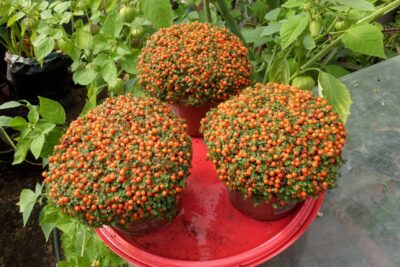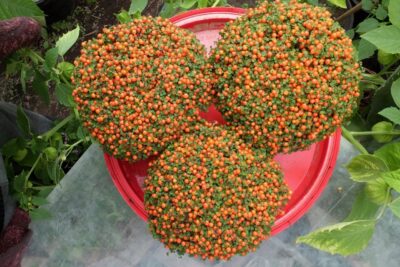“Oh Bob, how could you?” said a friend spying this nestling amongst my edible, scented and useful greenhouse specimens. Coral Bead plant does catch the eye, and to all the world looks just as if it’s one of those market stall plant travesties sprayed with paint, glitter or bedaubed with plastic flowers, fruits or bugs. And that was what he was accusing me of, -though he was accidentally spot on, it’s neither, edible, scented nor useful so had no right to be in my ‘collection’.

However Coral Bead / Pincushion plant, Coral Moss, Nertera depressa, is entirely natural, those bright plastic looking orange beads are not stuck on but grew, just as on Pyracantha. It’s also widespread in nature found in mountain regions of Peru, Cape Horn, New Guinea, Tasmania and New Zealand.
Oddly this may be a novelty now but was very well known to Victorian gardeners. Huge numbers were grown in pots under cover until berries set in early summer when moved out to embellish bedding plant schemes. This must, well could, have been beautiful depending on their skill, orange’s not an easy colour to blend with others. The bright display was handy but the compact habit of these plants too convenient.
Nertera is Greek for lowly and refers to the creeping habit, and depressa to being flattened. (Now it’s N. granadensis.) The foliage remarkably resembles Mother-of-thousands, Soleirolia aka Helxine, and could be mistaken till the wee white flowers appear, and then orange berries which hang on for months.
Coral Bead is best bought as an initial specimen then divided in spring into free draining gritty compost and kept in a cool position with high humidity, rather like its coffee and gardenia relatives in Rubiaceae.

Pots can be set low down filling in gaps in displays, or as ‘talking points’ on full view. In any case keep the plants in shallow topped up saucers so they’re moist and humid at all times. Nertera is at it’s best from mid-summer through autumn into early winter and although you could I’d not put it out in summer again as the birds just loved tearing off those berries…


